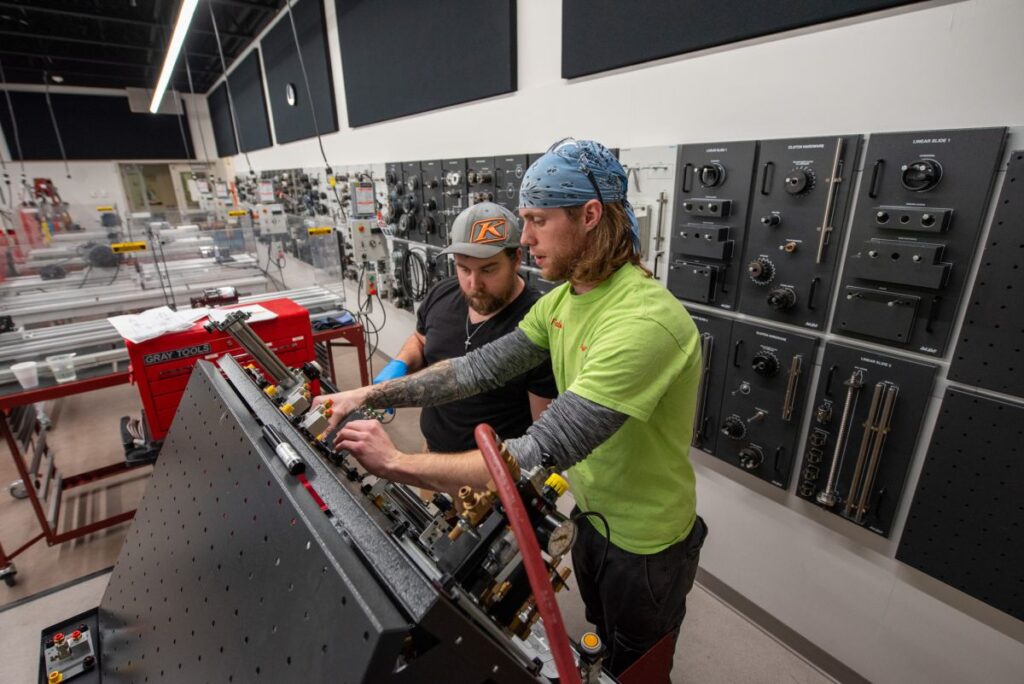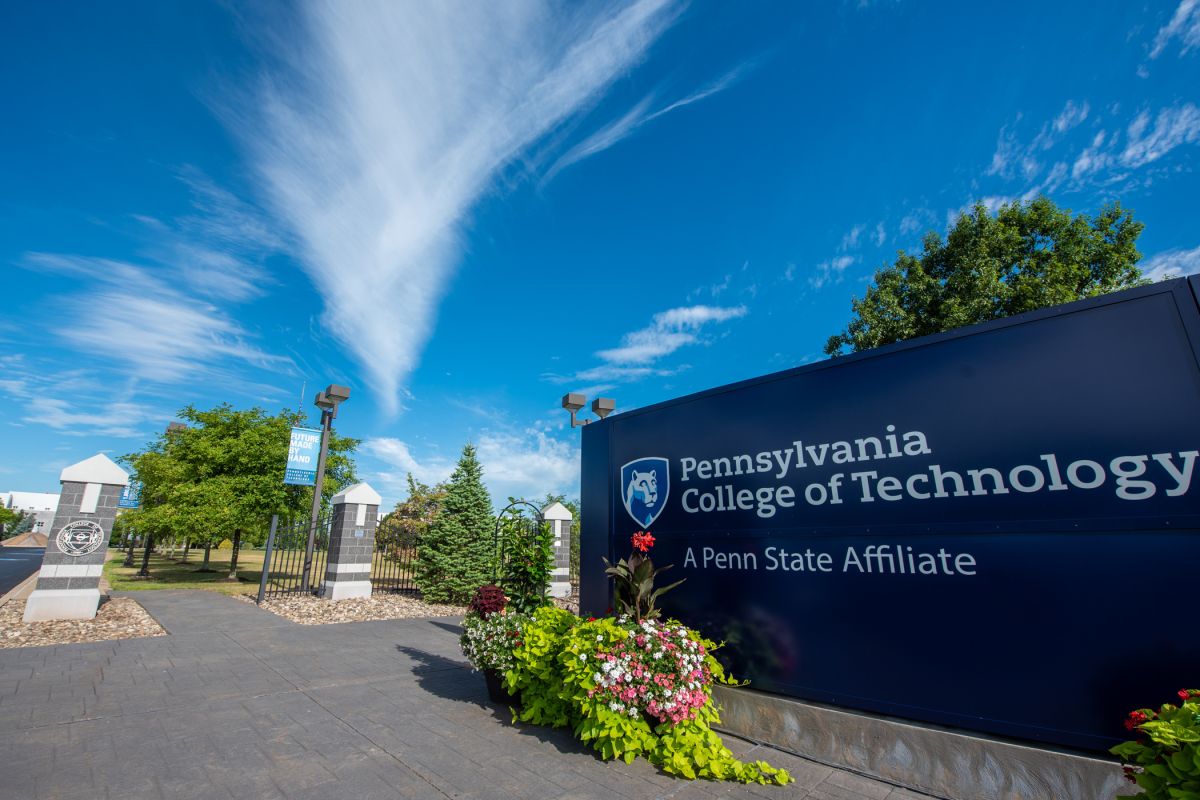
By Holly Riddle
In the past, HappyValley Industry has covered the ongoing industry talent shortage occurring both nationwide and regionally. One of the major forces combatting that shortage, connecting talent with industry? The region’s handful of industry-focused educational institutions — like Pennsylvania College of Technology.
Penn College has rolled out a number of impressive initiatives bolstering and boosting the regional industry workforce. In June, the college broke ground on an 1,800-square-foot Clean Energy House that will be used for training home-energy professionals with in-demand skills and certifications. Recent popular training workshops have touched on in-demand topics such as extrusion principles, injection molding and thermoforming. The Advanced Manufacturing Pre-Apprenticeship Program facilitated by Pennsylvania College of Technology continues to experience increased enrollment and engagement.
At the helm of all this is Alison Diehl, vice president for workforce development as of August and previously Penn College’s Clean Energy Center executive director. To learn more about Penn College’s efforts, we spoke with Diehl on the current labor shortage, the exciting initiatives at Penn College and how Penn College successfully attracts students to the fields that need new talent most.

Many of the industry employers that we talk to in the area cite a labor shortage as being a key challenge to their businesses; from your perspective at Penn College, why do you feel like this labor shortage currently exists?
The current labor shortage is multifaceted, driven by several factors.
First, there’s a significant skills gap in many industries in which the demand for specialized technical skills far outpaces the supply of qualified workers. This gap has been exacerbated by rapid technological advancements, requiring workers to continually upskill or reskill.
Additionally, demographic shifts, such as the retirement of baby boomers, lower birth rates and population decline in rural Pennsylvania, have left many positions unfilled.
Finally, the perception of certain careers, especially in skilled trades, has led to a decline in interest among younger generations.
At Penn College, we’re working hard to bridge this gap by aligning our programs with industry needs and emphasizing the value of these career paths. We accomplish this both through traditional credit programs in hands-on occupations and workforce development programs, such as apprenticeship, that have an earn-and-learn model.
Penn College has been doing a lot to address workforce development in the region and provide resources and programs to prep students to certain career paths; how, though, do you ultimately attract students to the resources and programs Penn College is offering?

Attracting students to our programs begins with showcasing the real-world impact and career opportunities that our education can provide. We engage in outreach efforts that highlight success stories of our graduates, the strong employment rates and the high demand for skills in the industries we serve. Additionally, we partner with local high schools, community organizations and industry leaders to create a pipeline of interested students.
“By offering hands-on learning experiences, state-of-the-art equipment and facilities and connections to industry employers, we make it clear that Penn College is a direct pathway to a rewarding, stable and sustainable career.”
We were recently awarded a $4 million U.S. Department of Labor grant to improve the pipelines of high school students and unskilled workers into pre-apprenticeship and then apprenticeship. By offering hands-on learning experiences, state-of-the-art equipment and facilities and connections to industry employers, we make it clear that Penn College is a direct pathway to a rewarding, stable and sustainable career.
What do you feel are the key things that educational institutions in the region can do, to help address the labor shortage?
Educational institutions can play a pivotal role by staying closely aligned with industry needs and adapting their curricula accordingly. This means offering programs that are directly tied to current and future job markets and ensuring that students gain practical experience through internships, apprenticeships and co-op programs.
In addition, the technical skills needed for many occupations are rapidly shifting. When students are developing durable skills such as critical thinking, communication and collaboration, it ensures they are well-positioned to succeed and develop new skills as needed.
“We know that these professions lead to jobs with family sustaining wages because a recent update to a study from Georgetown University’s Center on Education and the Workforce found that Penn College ranked in the Top 5 among all four-year public institutions in Pennsylvania in terms of return on investment for the 10 and 15-year periods following graduation.”
Institutions, and parents, should also work to dispel myths about certain careers, especially in the skilled trades, and actively promote the long-term benefits of these essential professions. We know that these professions lead to jobs with family sustaining wages because a recent update to a study from Georgetown University’s Center on Education and the Workforce found that Penn College ranked in the Top 5 among all four-year public institutions in Pennsylvania in terms of return on investment for the 10 and 15-year periods following graduation.

Do you have any advice for employers, as to how they can also go about remedying the labor shortage and attracting talent?
Employers need to take a proactive approach to talent development. This includes partnering with educational institutions like Penn College to create customized training programs that align with their specific needs. Offering internships, apprenticeships and co-op opportunities not only helps train the next generation of workers, but also allows employers to identify and recruit top talent early on. Additionally, employers should focus on creating an attractive work environment that offers career growth, competitive wages and a strong company culture. They should also consider offering continuous learning opportunities for their current workforce to retain and develop their talent pool.
Out of Penn College’s many workforce-related initiatives, which do you feel will be the most impactful? Which are you most excited about?
One of our most impactful initiatives is the expansion of our apprenticeship programs. These programs are vital because they allow students to earn while they learn, gaining valuable hands-on experience while attaining their education. We’ve also seen these programs benefit employers with higher retention rates, reduced time to fill vacancies and improved employee engagement.
I’m particularly excited about our MIDAS+ grant from the U.S. Department of Labor, which will allow us to address our regional skills gap by developing relationships with secondary education, community partners and industry to create pipelines of skilled talent for local employers. This grant initiative also benefits the individuals enrolled in these programs by engaging them in occupations that are well-compensated and family sustaining.
Holly Riddle is a freelance lifestyle and business journalist. She can be reached at holly.ridd@gmail.com.

